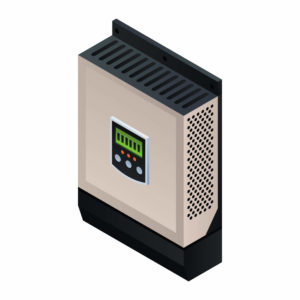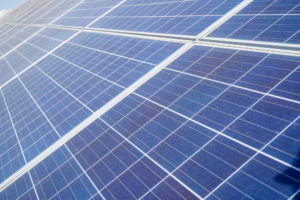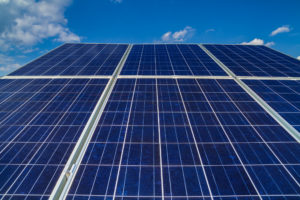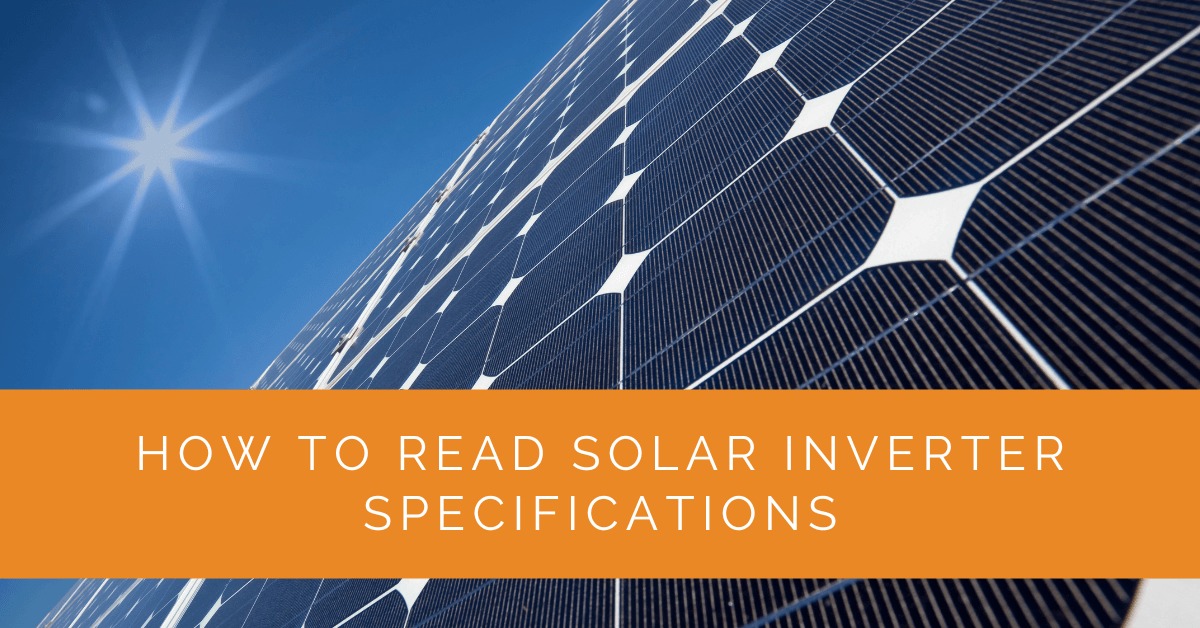Solar inverters play a crucial role in converting the direct current (DC) power generated by solar panels into usable alternating current (AC) power for your home or business. Understanding the specifications of a solar inverter is essential to ensure optimal performance and compatibility with your solar panel system. This article will explore the key aspects of solar inverter specifications and provide a comprehensive guide on effectively interpreting and leveraging them.
Contents
- 1 Key Takeaways
- 2 Key Components of Solar Inverter Specifications
- 3 Understanding Inverter Specifications in Practice
- 4 Case Study: Interpreting Solar Inverter Specifications for Optimal System Performance
- 5 Expert Insights From Our Solar Panel Installers About How to Read Solar Inverter Specifications
- 6 Experience Solar Excellence with Us!
- 7 Conclusion
Key Takeaways
- Solar inverter specifications are crucial for optimizing the performance of your solar panel system.
- Input specifications include maximum DC input voltage, MPPT voltage range, maximum DC input current, start-up voltage, and maximum number of DC inputs.
- Output specifications cover nominal AC output power, maximum AC output power, AC output voltage range, grid connection requirements, and power factor range.
Key Components of Solar Inverter Specifications
Input Specifications
The input specifications of a solar inverter relate to the DC power generated by the solar panels and their compatibility with the inverter. These specifications include the following:
Maximum DC Input Voltage
This specification indicates the highest voltage that the solar inverter can handle from the solar panels. It is essential to ensure that the maximum DC voltage of your panels does not exceed this limit to prevent damage to the inverter.
MPPT Voltage Range
The Maximum Power Point Tracking (MPPT) voltage range represents the optimal voltage range at which the solar inverter can extract the maximum power from the solar panels. Matching the MPPT voltage range with the voltage characteristics of your solar panel system is crucial for efficient power conversion.
Maximum DC Input Current
The maximum DC input current specification denotes the highest current that the solar inverter can handle from the solar panels. It is important to ensure that the current output of your panels does not surpass this limit to avoid overloading the inverter.
Start-up Voltage
The start-up voltage specification refers to the minimum voltage required for the solar inverter to begin functioning. It is necessary to ensure that the start-up voltage of the inverter aligns with the voltage characteristics of your solar panel system for seamless operation.
Maximum Number of DC Inputs
Some solar inverters support multiple DC inputs, allowing you to connect several strings or arrays of solar panels. The maximum number of DC inputs specification informs you of the inverter’s capacity to accommodate multiple inputs, which can benefit larger solar panel installations.

Output Specifications
The output specifications of a solar inverter describe the characteristics of the AC power it produces for consumption. Key output specifications include:
Nominal AC Output Power
The nominal AC output power represents the rated power output of the solar inverter under standard operating conditions. It indicates the maximum power the inverter can continuously supply to the electrical grid.
Maximum AC Output Power
The maximum AC power specification denotes the peak power output the solar inverter can deliver for short durations. This value is particularly relevant during high-demand periods, such as when multiple appliances are used simultaneously.
AC Output Voltage Range
The AC output voltage range specifies the acceptable range of voltages that the solar inverter can generate for grid connection. Ensuring the inverter’s output voltage aligns with the grid requirements is crucial for a stable and reliable connection.
Grid Connection Requirements
Different regions and utility providers may have specific grid connection requirements. Reviewing the inverter’s specifications to ensure compliance with the relevant regulations, such as voltage and frequency tolerances, is important.
Power Factor Range
The power factor measures how effectively the inverter converts the available power from the solar panels into useful AC power. The power factor range specification indicates the inverter’s ability to maintain a stable power factor within a specified range.

Efficiency Specifications
Efficiency specifications reveal the inverter’s ability to convert solar energy into usable electricity with minimal losses. These specifications include:
CEC Efficiency
The CEC (California Energy Commission) efficiency rating represents the inverter’s efficiency performance under standardized testing conditions. Higher CEC efficiency values indicate more efficient energy conversion.
Maximum Efficiency
The maximum efficiency specification signifies the highest efficiency level the solar inverter can achieve. It indicates the inverter’s ability to maximize power conversion and minimize energy losses during operation.
Euro Efficiency
The Euro efficiency is another efficiency rating that provides information on the inverter’s performance under European testing standards. It is important to compare and consider both CEC and Euro efficiency values to gauge the overall efficiency of the inverter.
Nighttime Power Consumption
Solar inverters require a small amount of power to operate, even during nighttime or when solar energy is not generated. The nighttime power consumption specification informs you about the inverter’s power draw during idle periods, allowing you to assess its energy usage when not producing electricity.

Protection and Safety Features
Solar inverters are equipped with various protection and safety mechanisms to ensure the system’s and its components’ safety. Important protection features to look for in the specifications include:
Overvoltage Protection
Overvoltage protection safeguards the inverter and connected devices by preventing excessive voltage levels that could damage the system. This feature is crucial for protecting against voltage surges or lightning strikes.
Overcurrent Protection
Overcurrent protection prevents the inverter and other system components from damage due to excessive current flow. It automatically shuts down the system or reduces the output power in the event of a current overload.
Ground Fault Protection
Ground fault protection detects and isolates electrical faults when an unintended connection between an energized conductor and the ground is present. It enhances the system’s safety by mitigating the risk of electric shock.
Arc Fault Circuit Interrupter (AFCI)
An Arc Fault Circuit Interrupter (AFCI) is a safety device that detects and mitigates the fire risk caused by electrical arcs. Inverter specifications mentioning AFCI indicate the inclusion of this important safety feature.
Anti-Islanding Protection
Anti-islanding protection ensures the solar inverter automatically shuts down during a grid outage. It prevents the inverter from continuing to feed electricity into the grid during power outages, protecting utility workers and maintaining grid stability.

Operating Conditions and Environmental Specifications
Operating conditions and environmental specifications provide valuable information about the inverter’s performance in different scenarios and environments. Consider the following specifications:
Operating Temperature Range
The operating temperature range specifies the ambient temperature within which the solar inverter can function optimally. It is essential to ensure that the inverter can operate within the expected temperature range of your location to maintain efficiency and reliability.
Relative Humidity Range
Solar inverters are designed to withstand specific levels of humidity. The relative humidity range specification informs you of the acceptable humidity levels for the inverter’s reliable operation.
Altitude Limitations
Altitude limitations refer to the maximum altitude at which the solar inverter can operate effectively. Ensuring that the inverter’s altitude limitations align with your location is important if you reside in a high-altitude area.
Cooling Method
The cooling method specification details the inverter’s mechanism to dissipate heat generated during operation. Common cooling methods include air cooling or liquid cooling. Understanding the cooling method helps you assess the inverter’s thermal management capabilities.
Environmental Certifications
Some solar inverters may possess certifications, such as IP (Ingress Protection) ratings or UL (Underwriters Laboratories) certifications, indicating their resistance to dust, water, and other environmental factors. These certifications ensure the inverter’s durability and suitability for specific environments.

Monitoring and Communication
Efficient monitoring and communication capabilities are crucial for monitoring the performance of your solar panel system. Consider the following specifications:
Data Monitoring and Logging
Data monitoring and logging allow you to track the performance of your solar panel system by collecting and analyzing data on energy production, efficiency, and other relevant metrics. Inverter specifications that mention data monitoring and logging capabilities indicate that the inverter can provide valuable data for system analysis and optimization.
Communication Interfaces
Solar inverters often come equipped with various communication interfaces that enable connectivity with external devices or monitoring systems. Common communication interfaces include Wi-Fi, Ethernet, RS485, and more. Checking the inverter specifications for compatible communication interfaces ensures seamless integration with your preferred monitoring system.
Compatibility with Monitoring Systems
It is important to verify whether the solar inverter is compatible with popular monitoring systems or platforms. Inverter specifications highlighting compatibility with specific monitoring systems simplify integrating your solar panel system into a comprehensive monitoring and management setup.
Remote Control Capabilities
Remote control capabilities allow you to remotely monitor and control the solar inverter’s operations. Inverter specifications mentioning remote control functionality indicate the ability to adjust settings, monitor performance, and diagnose issues from a centralized location, providing convenience and flexibility.
Warranty and Service
Considering a solar inverter’s warranty and service offerings is essential to protect your investment and ensure long-term support. Look for the following specifications:
Inverter Warranty Period
The inverter warranty period specifies the duration for which the manufacturer guarantees the inverter’s performance and reliability. A longer warranty period provides greater peace of mind and indicates the manufacturer’s confidence in the product’s quality.
Manufacturer’s Reputation and Support
Research the reputation and customer support of the inverter manufacturer. Check for their track record, customer reviews, and availability of technical support. Choosing a reputable manufacturer with strong customer support ensures prompt assistance and reliable after-sales service.
Service and Maintenance Options
Inverter specifications that mention service and maintenance options provide insights into the manufacturer’s commitment to supporting their products. Look for specifications related to routine maintenance requirements, availability of spare parts, and service center networks.
Technical Support Availability
Consider the availability of technical support from the manufacturer. Inverter specifications indicating 24/7 technical support or multiple channels of contact, such as phone, email, or online chat, ensure timely assistance in case of any issues or inquiries.
Understanding Inverter Specifications in Practice
Now that we have explored the key components of solar inverter specifications, let’s explore how to interpret and apply this information in practice. Here is a step-by-step guide:
- Gather the Inverter Specifications: Obtain the technical specifications and datasheets provided by the manufacturer for the specific solar inverter model you are considering.
- Identify Your Solar Panel System Requirements: Understand the characteristics and electrical specifications of your solar panel system, including voltage, current, and power output.
- Compare and Match Specifications: Compare the input and output specifications of the solar inverter with your system requirements. Ensure compatibility and alignment to optimize energy conversion and system performance.
- Consider Efficiency and Performance: Assess the efficiency specifications to select an inverter that maximizes power conversion and minimizes energy losses. Look for high CEC and maximum efficiency ratings for improved system performance.
- Evaluate Protection and Safety Features: Examine the protection features of the inverter to safeguard your system against voltage surges, overcurrent, ground faults, and arc faults. Choose an inverter with comprehensive safety mechanisms.
- Account for Operating Conditions and Environmental Factors: Consider the inverter’s operating temperature range, humidity tolerance, altitude limitations, and cooling methods. Select an inverter that can withstand the environmental conditions of your location.
- Review Monitoring and Communication Capabilities: Determine whether the inverter provides data monitoring and logging features. Verify compatibility with your preferred monitoring system and ensure seamless remote monitoring and control communication interfaces.
- Assess Warranty and Support: Evaluate the warranty period the manufacturer offers, their reputation, and the availability of service and maintenance options. Prioritize manufacturers with a strong track record, positive customer reviews, and comprehensive technical support to ensure long-term reliability and assistance.
Following these steps, you can effectively read and interpret solar inverter specifications to make informed decisions about the most suitable inverter for your solar panel system. Understanding the specifications empowers you to optimize energy generation, enhance system performance, and ensure your solar power setup’s long-term reliability and efficiency.
Case Study: Interpreting Solar Inverter Specifications for Optimal System Performance
Background
At Solar Panels Network USA, our mission is to ensure our clients have the best possible solar energy systems. Understanding and interpreting solar inverter specifications is a critical component of this mission, enabling us to select the most suitable inverters for each unique solar panel setup.
Project Overview
A client approached us with a desire to upgrade their existing solar panel system to a more efficient setup. Their primary goal was to maximize energy generation and improve overall system performance. To achieve this, we needed to carefully review and interpret the specifications of potential solar inverters.
Implementation
Gathering and Analyzing Specifications:
We started by collecting the technical specifications and datasheets for various solar inverters that were compatible with the client’s solar panel system. This step involved detailed analysis of input and output specifications, efficiency ratings, protection features, and environmental conditions.
Matching Inverter and Panel Specifications:
One of the key steps was ensuring that the maximum DC input voltage of the inverter could handle the voltage from the client’s solar panels without risk of damage. We also verified that the MPPT voltage range aligned with the panel’s voltage characteristics, crucial for efficient power conversion.
Evaluating Safety Features:
We emphasized the importance of overvoltage and overcurrent protection to safeguard the inverter and the entire solar system. These features are essential to prevent damage from voltage surges and excessive current, enhancing the system’s durability and reliability.
Considering Efficiency Ratings:
The client was keen on maximizing energy efficiency, so we paid close attention to the CEC and Euro efficiency ratings of the inverters. High efficiency ratings indicate better performance in converting DC power to AC power, minimizing energy loss and optimizing overall system output.
Reviewing Environmental Specifications:
Given the client’s location, we examined the operating temperature range and relative humidity tolerance of each inverter. This ensured that the chosen inverter could operate effectively within the local environmental conditions, maintaining consistent performance throughout the year.
Monitoring and Communication Capabilities:
We also looked for inverters with advanced data monitoring and logging features. These capabilities allow the client to track energy production and system performance, facilitating proactive maintenance and optimization. Compatibility with popular monitoring systems and remote control capabilities were additional considerations.
Results
By meticulously analyzing the solar inverter specifications and matching them with the client’s solar panel system requirements, we selected an inverter that significantly enhanced the system’s performance. The new inverter’s high efficiency ratings led to improved energy conversion, while its robust protection features ensured long-term reliability.
The client benefited from comprehensive data monitoring capabilities, allowing them to track their system’s performance in real-time. This proactive approach enabled timely maintenance and adjustments, further optimizing energy generation and system efficiency.
Summary
Understanding and interpreting solar inverter specifications is paramount for optimizing the performance and reliability of a solar panel system. At Solar Panels Network USA, we ensure our clients are equipped with the most suitable inverters by carefully analyzing key specifications such as input and output parameters, efficiency ratings, and protection features. This case study highlights the importance of matching inverter specifications with solar panel characteristics to achieve optimal system performance.
By focusing on these critical aspects, we empower our clients to harness the full potential of their solar energy systems, contributing to a sustainable and efficient future.
Expert Insights From Our Solar Panel Installers About How to Read Solar Inverter Specifications
Interpreting the MPPT voltage range is crucial for maximizing power extraction from your solar panels. Ensure it matches your panel’s voltage characteristics for optimal efficiency.
Senior Solar Technician
Overcurrent protection is a key safety feature to look for in inverter specifications. It prevents damage due to excessive current flow, ensuring the longevity of your system.
Lead Solar Installer
Don’t overlook the inverter’s efficiency ratings, like CEC and Euro efficiency. These metrics provide insight into how well your inverter converts solar energy into usable electricity.
Certified Solar Engineer
Experience Solar Excellence with Us!
Trust in Solar Panels Network USA, where our seasoned experts deliver top-quality solar solutions for homes and businesses nationwide. With a legacy of countless successful installations and a commitment to sustainable energy, we’re your reliable partner in the solar journey. Ready for a brighter, eco-friendly future? Call us now at (855) 427-0058 and harness the power of the sun!
Conclusion
Reading and understanding solar inverter specifications is crucial for selecting the right inverter that aligns with your solar panel system requirements. By familiarizing yourself with the key components of inverter specifications, including input and output specifications, efficiency ratings, protection features, operating conditions, monitoring capabilities, and warranty and support options, you can make informed decisions that lead to optimal system performance, efficiency, and long-term reliability.
Remember to compare and match the inverter specifications with your solar panel system’s voltage, current, and power output requirements. Consider efficiency ratings, protection features, and environmental factors to ensure the inverter operates optimally in your specific conditions. Additionally, evaluating monitoring and communication capabilities and warranty and support offerings will help you choose a reputable manufacturer that provides ongoing assistance and maintenance.
By harnessing the power of solar inverter specifications, you can unlock the full potential of your solar panel system, maximize energy generation, and contribute to a sustainable future powered by solar energy.
Now that you know how to read solar inverter specifications, it’s time to embark on your journey toward harnessing the power of solar PV systems for clean and renewable energy generation. Happy solarizing!
About the Author
Solar Panels Network USA stands at the forefront of solar energy solutions, driven by a team of seasoned solar engineers and energy consultants. With over decades of experience in delivering high-quality solar installations and maintenance, we are committed to promoting sustainable energy through customer-centric, tailored solutions. Our articles reflect this commitment, crafted collaboratively by experts to provide accurate, up-to-date insights into solar technology, ensuring our readers are well-informed and empowered in their solar energy decisions.

